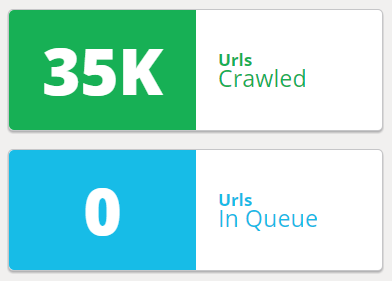6 Ways To Benefit From Unifying Your SEO Data
6 Ways to Benefit from Unifying Your SEO Data


With a wealth of new tools and plug-ins available to help businesses tackle each nuanced piece of their technical business needs, it’s not surprising that people can become overwhelmed with juggling resources to aid and analyze their SEO. What’s more, it can be difficult to bring various pieces of your SEO data together to look at the big picture. That’s where data unification comes in, looking like a true superhero.
What is data unification?
Data unification is the process of merging many fragmented data sources into one central view to understand the wider scope of what’s occurring, areas to focus on, and actions to take.
At Botify, our team of engineers and strategists have worked together for years to identify the pain points of SEO, develop an all-in-one (and growing) software suite, and anticipate future needs custom to enterprise websites. What we’ve found is that SEO data unification is a gamechanger.
Here’s why:
1. Accessibility for all stakeholders
In a recent article on our blog, we collected advice on leveling up your SEO career, straight from the mouths of veteran SEOs. A major finding was that SEOs need to not only be experts in strategizing, but also be able to communicate their findings with key stakeholders.
When you have data from various sources and you need to convey what’s working and what’s not to C-level executives, you might choose to make a unified presentation. But if all of your data lives in one place and can be sorted on the spot according to your business’s needs, it cuts out a huge step of the process: organizing.
Stakeholders at your company might not have time to learn the ins and outs of SEO (after all, that’s why they hired you!), but being able to show them errors that you’re finding in a way that’s easy to visualize and understand will help you do your job better and help them reach their revenue goals faster.
The Botify platform shows you SEO data from every phase of the search process: log file data, crawl data, SERP performance data, and website analytics data. Botify allows you to crawl and render (JavaScript + HTML) as search engines would, analyze your URLs against 1,000+ SEO metrics, view filtered groups of data or segmented groups of pages, create custom reports, and more. This means you can easily stockpile your data, modify your metrics tables, and switch out filters so that you can view points of data side by side, over time. Furthermore, you can easily navigate your data in real time while chatting with your CMO.


2. Eliminating room for error
If your data lives in various places and you need to stitch it all together, there’s a lot of room for error. You might transfer your data into Excel and realize that the data is incomplete, or you might utilize complicated formulas that, if devised incorrectly, could alter results and create a chain effect of errors. When you use a tool like Botify, all of the information lives in one place, so there’s no exporting, uploading, and stitching. Things just don’t get messy.
If you’re using multiple tools, you’re at a greater risk of mismatching. The data might be incomplete, outdated, or might not give a true representation of Google’s interactions with your website. Multiply that by however many tools you’re using, and there’s a lot that can go wrong.
Botify’s data is current, accurate, and complete (no sampling!). We approach SEO on your site the same way that search engines do, with no third parties and no scraping Google. We crawl entire sites, not just adhoc crawls, and we do it fast — crawling up to 250 URLs/second and rendering up to 100 URLs/second. Other tools not only take longer but often summarize their data, which leaves room for discrepancy. Being able to see complete, accurate data, and even focus in on the day that changes occurred, is a gamechanger.
Additionally, many tools have limits on how many rows of data you can export – something to watch out for when you’re trying to present complete data!


3. Layering your data to see your site’s true ranking factors
Aggregating your data means there’s a lot to play with. Being able to layer data from every phase of the search process (crawl data, log data, ranking data, traffic data, etc.) allows you to see how each one impacts the other. In this way, SEO data unification allows you to find “your site’s true ranking factors.”


Since any kind of change, whether on your website or from Google, can affect each site differently, it’s critical to be able to unify your data so you can see what’s affecting what (e.g. is Googlebot crawl frequency impacting ranking? Is content quality impacting my traffic?). Layering your data can help you identify the culprit and take action to remedy the situation faster.
With Botify, you can also take a segmented look at all your SEO metrics. By grouping similar pages together (e.g. all of your product pages, or all pages on a certain template), you can avoid comparing apples to oranges. Each page type needs customized treatment to perform well in search, and segmenting your pages can help with that.


4. Automation and customization across the board
As a business grows and creates more product pages and content pages, it becomes increasingly difficult to pay attention to errors in pre-existing pages while developing and optimizing new pages. This is one of the most daunting problems for SEOs. With Botify, you can employ a range of filters in order to observe different factors affecting your SEO and how these factors interact with one another. For example, you can mix and layer data points such as:
- Keywords, compliance, and linking
- Keywords within a query, depth on site, and pagetype
- Crawls from specific bots, compliance, internal links, and average position
By applying filters, you can aggregate relevant data and have more control over your reports through automation. You can set it and forget it, and then observe the same data as prioritized by your business day after day.
5. Integrating expert perspectives and key learnings
Once automation comes into play, it becomes easier to observe your data and integrate thoughtful modifications or tests. Since SEO is constantly changing according to search engine updates and advancements in technology, an SEO needs to be quick on their feet, implementing constant testing and strategizing to reach long-term solutions. By having a comprehensive view of their data, experts have more opportunities to conduct relevant tests, make nuanced adjustments, and scan for results.
A human perspective can help you dig deeper. Botify’s data strategists can implement a custom SEO methodology to make informed evaluations and suggestions for your company as your stockpiled data becomes more nuanced. Plus, when urgent situations arise, it’s best to be prepared in order to act with clear data and proven tests to back any new strategies that you implement.
6. Keeping up to date with changes and planning for the future
If there’s one thing that’s certain, it’s that SEO is always changing. That means that your SEO team will need to adjust its strategy quite often. Using your automated data reports and filter prioritization, you can match your data over time to keep track of the big picture.
For example, what do your logfiles look like over a 30-day time period? What about your keywords? When you match your data over time, you’re able to pinpoint when changes occur, observe what factors may have caused them, and work towards a solution. Otherwise, you’re rounding up a lot of missed opportunities for improving your SEO (and driving revenue for your company).
Being able to compare specific time periods will help you understand your website’s SEO history and better plan for the future. Botify provides a comprehensive picture of your data and easily allows you to compare data over time.


Data unification can only help you
No one said SEO was easy, but unifying your data makes it much easier to comprehend, navigate, and strategize effectively. Plus, you can look at your data holistically, considering the big picture and integrating real-time findings to keep up with trends.
So, want to “x” out of a few of your open tabs and open up Botify instead? Give us a shout, and we’ll work with you to create an SEO experience that’s well-suited to your company (and your CMO).
Data scrambling, be gone!





